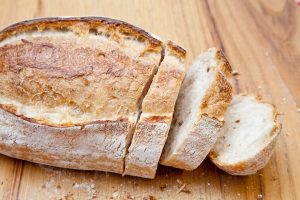What is the Glycemic Index and how can it help you lose weight?
Most of us will have heard of the Glycemic Index or GI Diet, but how many of us actually know what they are?


Tables packed with numbers might look confusing, but, simply put, the Glycemic Index measures how quickly a food causes your blood glucose (or blood sugar) levels to rise after you eat it. Discover how a low glycemic diet could help you lose weight, reduce sugar cravings and stay full and energised...
The Glycemic Index was originally designed to help diabetics keep their blood sugar levels stable. However, nutritionists believe that blood sugar spikes inhibit fat burning and trigger cravings for all of us.
Carbohydrates contain sugars, which are released into the bloodstream at varying rates, depending on several factors. Carbohydrates are not only found in sugary foods like pastries, biscuits and cakes, and starchy foods such as bread, pasta and rice, but in the likes of fruit, vegetables, juices, milk and yoghurt. Different kinds of carbohydrates are digested at different rates.
The more quickly they are digested, the quicker and sharper the rise in blood glucose. High GI foods cause blood sugar to spike, whilst low Glycemic Index foods, which are digested more slowly, release energy more gradually. Research shows that the sugar released from foods with a higher Glycemic Index value is more readily stored as fat. Evidence also suggests that a low Glycemic Index diet is more satiating and can result in more weight loss than other diets.
Which foods are low Glycemic foods?
Pure glucose has a GI of 100. Low GI foods have a GI of 55 or less and include most fruits and vegetables, beans and lentils, tofu, nuts and seeds, oily fish, sweet potatoes, stoneground wholewheat bread, oat bran, muesli and rolled or steel cut oatmeal.
Medium GI foods have a GI value of 56-69 and include wholemeal, rye and pita bread, quick cook oats, couscous and basmati, wholegrain and wild rice. High GI foods have a GI of 70 or higher and include white bread, white rice, potatoes, rice cakes, melon, pineapple and pumpkin.

Processed foods tend to behigh GI foods
Unsurprisingly, processed foods tend to have a higher GI value, e.g. white bread has a higher GI than wholemeal. However, the GI value of a food can change depending on how it is prepared, whether it is cooked, and even how ripe it is! For example, a raw carrot has a GI value of 16, but this can rise to 49 once it has been peeled, diced and boiled!
Sign up to our free daily email for the latest royal and entertainment news, interesting opinion, expert advice on styling and beauty trends, and no-nonsense guides to the health and wellness questions you want answered.
Fat and fibre slow down the rate at which food is digested, decreasing its GI value. This means that fatty foods such as chocolate cake and crisps may have relatively low GI values. However, nutritionists caution against using this as an excuse to indulge those junk food cravings, advising that, somewhat confusingly, low GI foods are not necessarily a ‘healthy' choice, whilst high GI foods are not necessarily unhealthy.

Glycemic Index depends on food portion size
To complicate matters further, our glycemic response to any given food varies with portion size, and depends on the foods we eat with it. To find a food's glycemic load (GL), which may provide a more accurate indication of our glycemic response than GI alone, its GI value must be multiplied by the grams of carbohydrate found in a single serving.
The result is then divided by 100. Watermelon, for instance, has a relatively high GI (72), but so few carbohydrates per serving that its glycemic load is just 4. A serving of oatmeal, however, has an average GL of 13, despite its relatively low GI (55). Pairing a high GI food with protein or fat-rich foods, meanwhile, reduces its glycemic load by slowing the rate at which it is digested and buffering its impact on blood sugar levels.
How to lose weight on a low glycemic diet
- 1. Pick wholegrain bread, pasta, rice and crackers over white varieties.
- 2. Opt for sweet potatoes or new potatoes over 'old' potatoes and cook them in their skins rather than mashing them.
- 3. If you're eating out, choose basmati rice.
- 4. Fill up on fibre-packed vegetables.
- 5. Pair high GI foods with low GI toppings and side dishes to reduce their overall glycemic impact.
- 6. Include protein and healthy fats in every snack and meal, e.g. add a small handful of nuts and seeds to your fruit salad.
- 7. Keep an eye on serving sizes - a low GI value isn't a free pass!
- 8. Find out the GI of your favourite foods and potential substitutes. Swapping Bran Flakes for All Bran, for example, could reduce the GI of your breakfast from 74 to 38.
Lauren is the former Deputy Digital Editor at woman&home and became a journalist mainly because she enjoys being nosy. With a background in features journalism, Lauren worked on the woman&home brand for four years before going freelance. Before woman&home Lauren worked across a variety of women's lifestyle titles, including GoodTo, Woman's Own, and Woman magazine.
